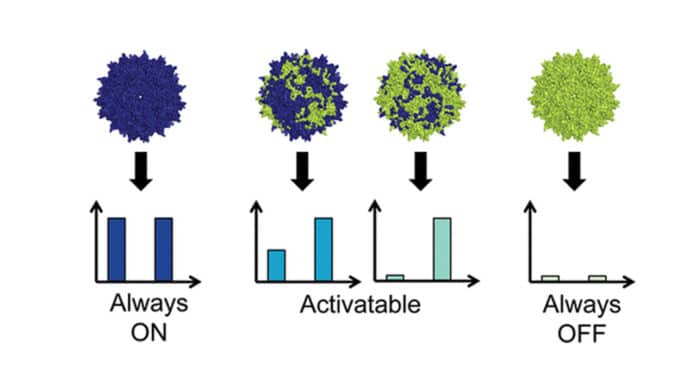By chipping away a viral protein, Rice University researchers have found a way toward infection like, nanoscale gadgets that might have the capacity to convey medications to cells.
The protein is one of three that make up the defensive shell, called the capsid, of common adeno-related infections (AAV). By making logically littler renditions of the protein, the scientists made capsids with remarkable capacities and took in an incredible arrangement about AAV’s components.
Junghae Suh, Rice bioengineer said, “AAVs are small — about 25 nanometers — and contain a single strand of DNA inside tough capsids that consist of a mosaic of proteins known as VP1, VP2 and VP3. AAVs have been used to deliver gene-therapy payloads, but nobody has figured out how AAV capsids physically reconfigure themselves when triggered by external stimuli.”
“This virus has intrinsic peptide (small protein) domains hidden inside the capsid. When the virus infects a cell, it senses the low pH and other endosomal factors, and these peptide domains pop out onto the surface of the virus capsid.”
“This conformational change, termed an ‘activatable peptide display,’ is important for the virus because the externalized domains break down the endosomal membrane and allow the virus to escape into the cytoplasm. In addition, nuclear localization sequences in those domains allow the virus to transit into the nucleus. We believed we could replace that functionality with something else.”
Scientists thought their mutant AAVs could become “biocomputing nanoparticles” that detect and process environmental inputs and produce controllable outputs. Modifying the capsid is the first step.
Of the three normal capsid proteins, just VP1 and VP2 can be activated to uncover their utilitarian peptides, yet neither can influence a capsid on its to possess. Shorter VP3s can frame capsids independently from anyone else yet don’t show peptides. In common AAVs, VP3 proteins dwarf each of their compadres 10-to-1.
That restrains the quantity of peptides that can be uncovered, so scientists set out to change the proportion. That drove them to truncate VP2 and incorporate mosaic capsids with VP3, bringing about fruitful modification of the quantity of uncovered peptides. In light of past research, they embedded a typical hexahistidine label that made it simple to screen the surface show of the peptide area.
Nicole Thadani said, “We wanted to boost the protein’s activable property beyond what occurs in the native virus capsid. Rather than displaying just five copies of the peptide per capsid, now we may be able to display 20 or 30 and get more of the bioactivity that we want.”
“The results were quite surprising, and not obvious to us. We chopped down that VP2 component enough to form what we call a homomeric capsid, where the entire capsid is made up of just that mutant subunit. That gave us viruses that appear to have peptide ‘brushes’ that are always on the surface.”
